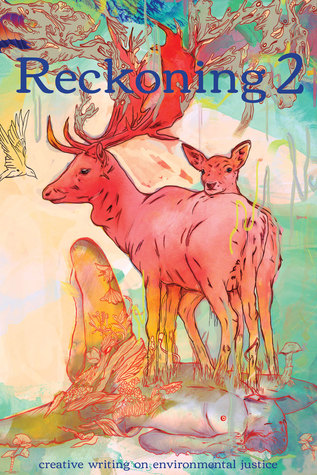Stories We Love

This story from Reckoning Magazine packs a ton of heart and hope into a diminutive novelette. It also packs eldritch horror into the unsuspecting body of a young girl whose family is responsible for the dam and diversion project which dramatically altered the ecosystem of its small-town setting. Lanny Boykin is a shape-shifter; but she is not the only shape-shifter in the story.
While the reader is fascinated by the mystery of Lanny’s transformations — and Lanny’s desperate efforts to escape her hometown — the story of the town’s transformation quietly expands in the background, not unlike Lanny in her sea-monster form, spreading out below the surface of the water, displacing lakes with sheer mass. There is desperation in the lives of Lanny and her best friend Junebug, and in the lives of their parents and other townspeople who are tense and exhausted, living their lives on the cusp of failures very much connected to their surrounding ecology. Lanny’s home is a mill-town poised to become a mining town, the pollution of water from the mill about to become pollution of the air from the mine. But the story stresses that it is insufficient to criticize the mill workers (or even the future miners) who have little say in the progression of industry in the town; Barber makes this clear in her portrayal of poverty, quiet desperation, and the seemingly impotent protest of Junebug and Jack against the mine.
The town’s industrialists seem unstoppable, not unlike Lanny’s transformations which at first come over her unexpectedly, forcing her to stumble — more than half out of her mind — toward water. But as the story reaches its climax, it becomes apparent that that which can stop the town’s further development is Lanny herself, a girl who is connected through ancestry to the place’s first environmental devastations, and through her heart to the town’s future of which she has never felt a part. In this way, Barber has created an intricately interconnected narrative, wherein those who are responsible for ecological devastation pay for it with the lives of their descendants, but the sacrifice is made willingly, for love and hope.
The love between Lanny and Junebug and the care they show for each other even when they disagree drives this narrative. It is desperately sweet. Even the destruction of the story’s final scene barely touches the palpable connection demonstrated by these two characters. If Lanny and Junebug stand at odds as representatives of the disconnection of industrialized development of an ecosystem and the struggle of the poor and dispossessed to withstand detrimental changes , they also represent a deep care and connection that can right wrongs and maybe even rehabilitate damaged worlds.

1 thought on “Review: Lanny Boykin Rises Up Singing by Jess Barber”